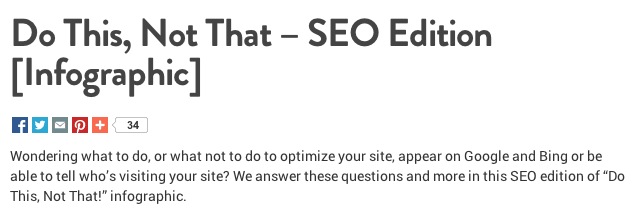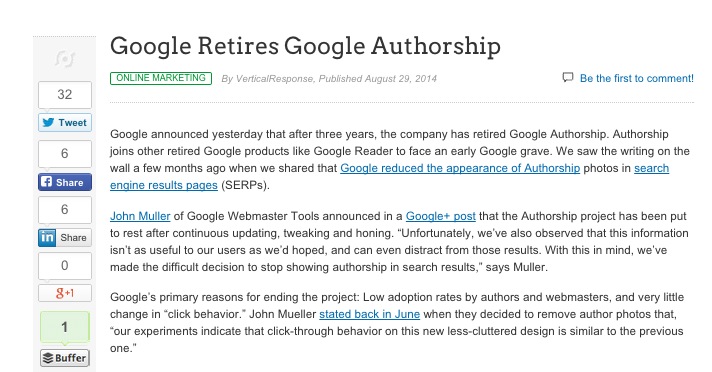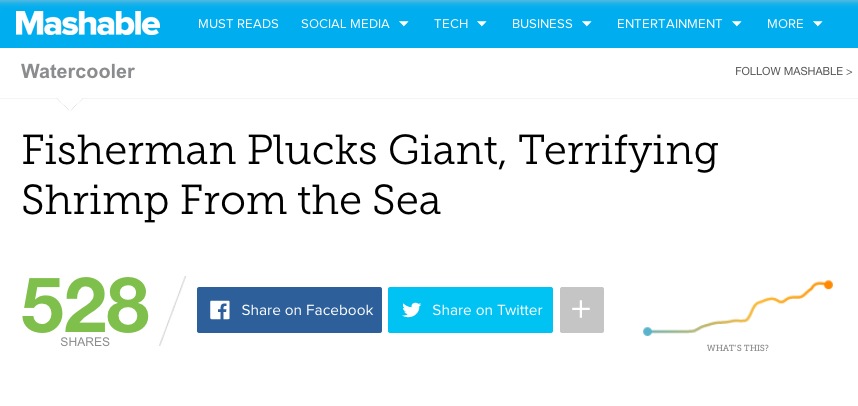
Sharing Isn’t Always Caring – People Don’t Read What They Share Online
This blog post is off to a good start because you’re currently reading it. Many folks may have already liked it, tweeted it and shared it with their social networks without even reading the first sentence. Shocked? It’s more common than you might think. You may have even done it yourself.
If you have a blog or site that you regularly update with quality content, you probably look at a number of metrics to measure success including unique visits, time spent on page and of course, social sharing. Many blogs and sites feature social sharing icons prominently to encourage the behavior of sharing, and some include counters to display how many times that post or article has been shared. While studies have shown that sharing content via social carries the same weight as an in-person recommendation, it may be surprising to learn that many people are sharing content without ever even reading it.
Here are a few examples of common social sharing widgets, as seen on VerticalResponse, Business 2 Community and Mashable:
Tony Haile, CEO of Chartbeat, a company that measures real-time traffic, blew the roof off this topic earlier this year when he tweeted, “…We’ve found effectively no correlation between social shares and people actually reading.” At VerticalResponse, we experience this for ourselves, as many of our blog posts garner engagement on social in the form of likes, tweets and shares, but when we dig into how many people actually click on the post, the numbers don’t match up; effectively proving that people are engaging with our content without reading it. You can see in the following example that only about half of the people who liked the post actually clicked on it.

Why Do People Share?
So why would people share content that they’ve either never read, or have just merely skimmed? It’s a question that the folks at The New York Times were interested in as well. So interested in fact, that they partnered with Latitude Research to do a study called The Psychology Of Sharing: Why Do People Share Online? The study had three phases including in-person interviews, a one-week sharing panel and a survey of 2,500 medium/heavy online sharers and explored the motivations behind why people share.
The study revealed that sharing is not new, it’s just evolved from face-to-face and verbal sharing, to information age sharing with more up-to-the-minute information via Twitter, Facebook, Instant Messenger, texts and email. And according to the study, people who are sharing are doing it for different reasons:
- To bring valuable and entertaining content to others – 94 percent of shares responded that they carefully consider how the information they share will be useful to the recipient.
- To define ourselves to others – 68 percent share to give a better sense of who they are and what they care about.
- To grow and nourish relationships – 78 percent share information online because it lets them stay connected to people they may not otherwise stay in touch with.
- Self-fulfillment – 69 percent share information because it allows them to feel more involved with the world
- To get the word out about causes and brands – 84 percent share because it is a way to support causes or issues they care about.
How to Get Your Content Shared and Read
With so much content being produced and shared every minute of every day, how do you get yours to stand out and get read? A few simple factors can help including the following:
- Appeal to people’s desire to connect with each other, not just your brand or cause. Look at the recent Ice Bucket Challenge for ALS. Friends and family could nominate each other (making it about each other and the cause) via social media to take the challenge and raise awareness. It went viral and you were hard pressed to find someone in your network that hadn’t taken the challenge or made a donation.
- Establish trust: How can you expect people to read and share your content if they don’t know who you are or what you represent? If you want to become a thought leader in your industry or field, you need to nurture a loyal following by producing relevant, reliable information that is valuable for your intended audience. You can’t be credible if you publish inaccurate posts that are totally self-serving. Helping, not selling, has become the mantra of content marketers far and wide.
- Keep it simple: “One Simple Story” is a method many marketers practice and for good reason. By clearing away distractions and unnecessary fluff, your content won’t get muddled and your reader will better understand and connect with your intention.
You’ve made it to the end of this post! Now you can share away knowing you’ve read it top to bottom!
Do you share content without reading it entirely? Tells us why in the comments.
Get more marketing news, tips and tactics in the Weekly VR Buzz.
© 2014 – 2018, Contributing Author. All rights reserved.






